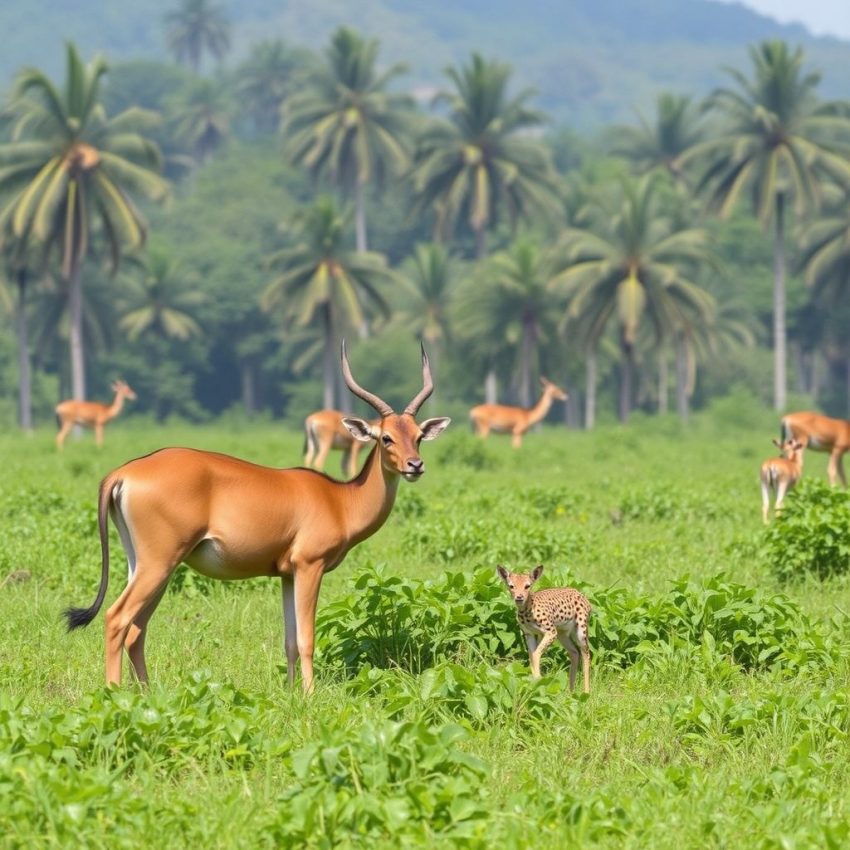Monkey Business: Sri Lanka's Wildlife Census Stirs Debate Over Crop Damage
Sri Lanka, a biodiversity hotspot, is embarking on a nationwide wildlife census, counting everything from its iconic elephants to the more ubiquitous monkeys, giant squirrels, and peacocks. While crucial for conservation efforts, this census has reignited the age-old conflict between humans and wildlife, particularly concerning crop damage caused by these increasingly bold creatures.
Farmers across the island nation are voicing their frustrations, citing significant losses due to marauding monkeys, squirrels, and peacocks feasting on their crops. These animals, often protected by religious and cultural beliefs, are becoming increasingly habituated to human presence, venturing closer to villages and farmlands in search of easy meals. Rice paddies, fruit orchards, and vegetable gardens are all vulnerable to their raids, impacting livelihoods and food security.
"It's a daily battle," laments one farmer from the central province. "The monkeys are clever. They come in troops, overwhelming our efforts to scare them away. We lose a significant portion of our harvest each season." Similar stories echo across the country, with farmers resorting to various methods – from noisy firecrackers to scarecrows – with limited success.
The wildlife census, while essential for understanding population dynamics and informing conservation strategies, adds another layer to this complex issue. By providing accurate data on the abundance and distribution of these species, it can help authorities develop more effective management plans. However, farmers argue that simply counting the animals isn't enough. They demand concrete solutions to mitigate the damage and protect their livelihoods.
Several suggestions have been put forward:
- Improving Crop Protection: Implementing physical barriers like fencing or netting can deter animals from accessing crops. Exploring alternative farming practices that are less attractive to wildlife could also be beneficial.
- Promoting Coexistence: Educating communities about wildlife behavior and promoting tolerance can foster a more harmonious relationship between humans and animals. This could involve strategies like creating buffer zones around farmlands and designated feeding areas for wildlife away from crops.
- Compensation Schemes: Establishing mechanisms to compensate farmers for crop losses caused by wildlife could alleviate some of the financial burden and incentivize coexistence.
- Addressing Habitat Loss: The increasing encroachment of human settlements into wildlife habitats is a major driver of this conflict. Protecting and restoring natural habitats can provide alternative food sources for these animals, reducing their reliance on crops.
The Sri Lankan government faces the challenging task of balancing the needs of both its human and wildlife populations. The wildlife census is a crucial first step, but it must be followed by concrete actions that address the concerns of farmers and ensure the long-term survival of these iconic species. Finding a sustainable solution that allows both humans and wildlife to thrive is crucial for the future of Sri Lanka's rich biodiversity.
What are your thoughts on this issue? Share your comments below.
Don’t miss out on this exclusive deal, specially curated for our readers!
This page includes affiliate links. If you make a qualifying purchase through these links, I may earn a commission at no extra cost to you. For more details, please refer to the disclaimer page. disclaimer page.

